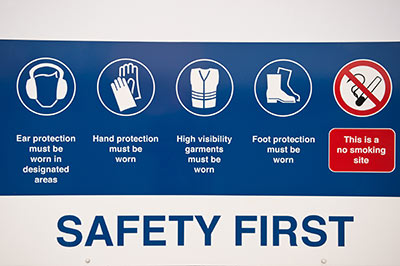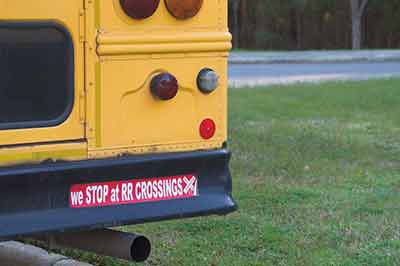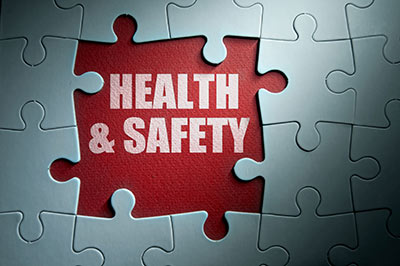On or before July 1, 2009 each district and the CSI was to establish a timeline as to when they will be in compliance with the requirements set forth in SB08-°©‐181/CRS 22-°©‐32-°©‐109.1 and begin working toward achieving the NIMS tenets, in coordination with community partners, develop a strategic plan for achieving compliance.
Category: Guides and Manuals
School Safety Planning Manual, 2008
The School Safety Planning Manual: Essential Resources for Developing a Comprehensive Safe School Plan developed to assist the K–12 public school system to create and implement safety plans in compliance with both state and federal laws. The 2007 Washington State legislature radically altered existing laws dealing with school safety plans, requiring a range of specific elements to each school’s plan, and the processes which must be developed and maintained to facilitate these plans.
TRAFFIC OPERATIONS AND SAFETY AT SCHOOLS: RECOMMENDED GUIDELINES
This report contains the recommended school site planning guidelines for site selection, general site requirements and design, school bus-related design and operations, parent drop-off/pick-up zones, pedestrian and bicycle access, driveways, turn lanes, traffic control, signing and marking, and parking. The research team based these guidelines on a comprehensive review of existing guidelines and the results of field studies at school sites in Texas. The report documents the recommended guidelines and best practices for transportation operations and safety within school sites – focusing on the parent and bus drop-off/pick-up zones. The report also contains a site plan review checklist tool that TxDOT engineers and school district representatives can use to facilitate good site planning and design.
TRAFFIC OPERATIONS AND SAFETY AT SCHOOLS: RECOMMENDED GUIDELINES
This report contains the recommended school site planning guidelines for site selection, general site requirements and design, school bus-related design and operations, parent drop-off/pick-up zones, pedestrian and bicycle access, driveways, turn lanes, traffic control, signing and marking, and parking. The research team based these guidelines on a comprehensive review of existing guidelines and the results of field studies at school sites in Texas. The report documents the recommended guidelines and best practices for transportation operations and safety within school sites – focusing on the parent and bus drop-off/pick-up zones. The report also contains a site plan review checklist tool that TxDOT engineers and school district representatives can use to facilitate good site planning and design.
IOWA SCHOOL SAFETY GUIDE 2012
This document was developed for the schools of Iowa to use as a template to enhance current school safety programs; the creation of this document was a partnered effort at the state level between the aforementioned agencies. The purpose of this document is to give school districts and individual schools a planning resource to use when creating their school safety plans. Ultimately, schools can decide how much of this document they would like to incorporate into their current plan. The original document was created by the Minnesota Department of Homeland Security, and its use was granted to Iowa Homeland Security in 2011. Iowa pulled together a panel of experts to make this document specific to Iowa’s schools, and laws.
It’s important to note the partnership created by this document is intended to continue through information sharing in relation to critical assets, infrastructure protection, and school safety. Iowa Homeland Security is a representative in the Iowa Department of Public Safety, Division of Intelligence Fusion Center. This partnership allows for streamlined information sharing to the critical infrastructure owner/operators across the state. The current plan for information sharing is through the Iowa Homeland Security and Emergency Management, Threat Information and Infrastructure Protection Program (TIIPP) to the Iowa Department of Education for processing and dissemination statewide. Depending on the type of information being released it could be specific to a school, district or the education sector statewide.
COMPREHENSIVE SCHOOL SAFETY PLAN: San Bruno Park School District
Parkside Intermediate is one of eight schools in the San Bruno Park School District with traditions dating back one hundred years. Parkside Intermediate has a diverse pupil body and is served by a dedicated staff. Both staff and parents comment on the positive changes that are ongoing in our school.
Parkside Intermediate faces challenges in maintaining a safe school. This section of the Comprehensive School Safety Plan will describe programs in place at our school as well as strategies and programs of our school site council for continued improvement in providing a safe, orderly, school environment conducive to learning.
MSBO Facilities Benchmarking Report
For eight of the past ten calendar years, MSBO has published this facilities benchmarking report for use by business and facilities managers to compare their costs and practices to the universe of school districts in Michigan. This year’s report also includes comparison data from each of the previous reports illustrating effects of changes made over time.
Benchmarking is a process used by many organizations to evaluate their performance by comparing themselves within their industry in a number of categories. Using benchmarking data, internal goals and objectives are set to match the best results in each category. As each segment of the organization is benchmarked, progress toward those goals is measured and the entire organization benefits.
New Mexico Public School Maintenance Conditions and Costs
The FMAR stands for Facility Maintenance Assessment Report (FMAR). The FMAR is a tool used by the Public Schools Facility Authority (PSFA) to evaluate NM school facilities conditions / appearance and determine and verify the implementation of an effective maintenance management program. The results (feedback report) are used to establish a benchmark for the individual schools/districts maintenance programs in an effort towards continuous improvements and implementation of cost effective maintenance strategies.
Facilities Maintenance Conditions and Costs Report_NM Publ Sch Facils Auth 2013
State of Arkansas: Public School Facilities, Maintenance, Repair and Renovation Manual
This manual is mandated by Act 1426 of the 2005 Regular Session of the Arkansas General Assembly as amended by Act 19 of the 1st Extraordinary Session, 2006. The research for this manual was compiled by a special committee from the Task Force to Joint Committee on Educational Facilities and the Division of Public School Academic Facilities and Transportation.
An Introduction to Facility Management Strategies for Alaskan Schools
Discussion Topics
Overview of school maintenance programs
- The critical role of preventive maintenance
- The work order process – 2 examples
- The importance of communication and community involvement
- PM and facility management requirements for CIP eligibility – 6 elements
Facilities Management Maintenance Strategies - Alaska Dept of Education











